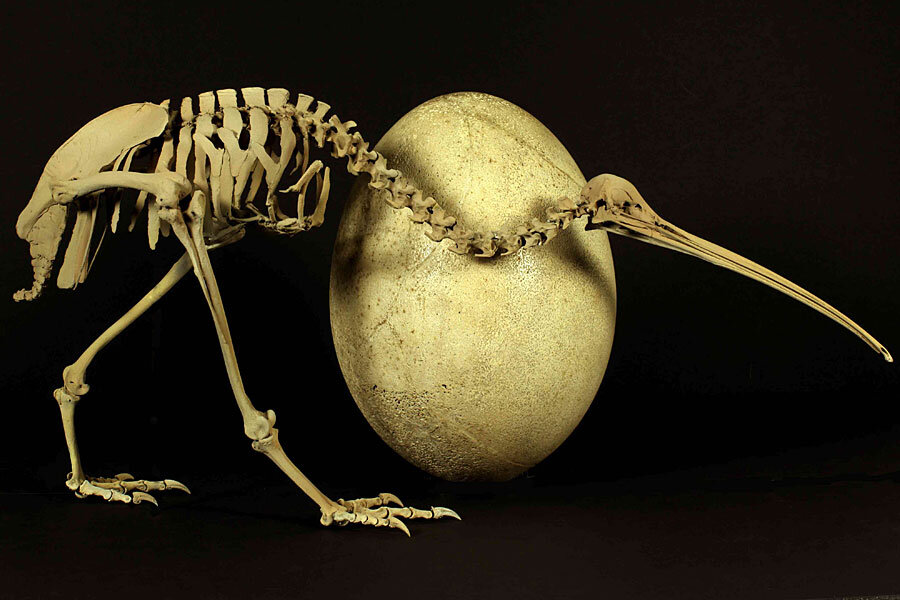How did flightless birds evolve? Kiwi DNA offers clues.
Loading...
| Wellington, New Zealand
Research linking New Zealand's diminutive kiwi with a giant extinct bird from Africa is prompting scientists to rethink how flightless birds evolved.
A report published Friday in the journal Science says DNA testing indicates the chicken-size kiwi's closest relative is the elephant bird from Madagascar, which grew up to 3 meters (10 feet) high and weighed up to 250 kilograms (550 pounds) before becoming extinct about 1,000 years ago.
The authors say the results contradict earlier theories that the kiwi and other flightless birds, including the ostrich and emu, evolved as the world's continents drifted apart about 130 million years ago.
Instead, they say, it's more likely their chicken-size, flight-capable ancestors enjoyed a window of evolutionary ascendancy about 60 million years ago, after dinosaurs died out and before mammals grew big.
Those birds, the authors say, likely flew between the continents, with some staying and becoming the large, flightless species we know today.
Alan Cooper, a professor at the University of Adelaide in Australia and a co-author of the paper, said the DNA results came as a huge surprise given the differences in size and location between the kiwi and elephant bird.
"This has been an evolutionary mystery for 150 years. Most things have been suggested but never this," he said. "The birds are about as different as you can get in terms of geography, morphology and ecology."
Cooper, a New Zealander by birth, is hoping the paper will also bring him a measure of redemption.
That's because two decades ago, Cooper and other scientists discovered genetic links between the kiwi and two Australian flightless birds, the cassowary and the emu. That led to New Zealanders believing their iconic bird might have come from Australia, a traditional rival.
"There was a huge outpouring of angst," Cooper said. "New Zealanders weren't too impressed."
The nation's identity is so entwined with the bird that New Zealanders call themselves kiwis and have also given the name to their currency and the kiwifruit.
But it turns out that if the emu was a cousin to the kiwi, the elephant bird was a sibling. Cooper said it has taken until now for DNA techniques to advance enough to get a usable result from the ancient bones of the Madagascan bird.
Cooper said the bird took its name from Arabic legends that suggested it was so fearsome it could grab an elephant with its talons.
There's little basis for the legend given the bird was a flightless herbivore. In fact, it was likely humans that hunted it into oblivion, Cooper said.
Trevor Worthy, a research fellow at Australia's Flinders University and a paper co-author, said it's likely the kiwi stayed small and took to eating insects at night because it didn't want to compete for habitat and food with anotherNew Zealand flightless bird, the moa, which is also now extinct. He said it's strange the kiwi and elephant bird are such close relatives.
"One got big, one stayed little," he said.
Massey University professor David Penny, who wasn't involved in the researchbut who peer reviewed it for Science, said the results are very interesting and help complete the puzzle of flightless birds.
Copyright 2014 The Associated Press. All rights reserved. This material may not be published, broadcast, rewritten or redistributed.







